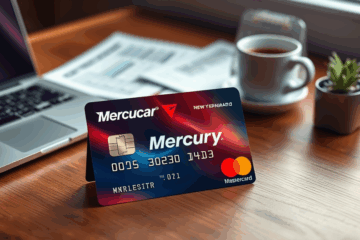Exploring Personal Loan Funding Options for You
Funding options are essential for individuals seeking financial solutions to various needs, from debt consolidation to unexpected expenses.
Get your personal loan in just 60 seconds!
Flexible loans tailored for freelancers await you!
In this article, we will delve into the diverse personal loan funding options available today.
We will explore peer-to-peer loans that connect borrowers with individual investors, utilize online lending platforms for quick rate comparisons, and examine specialized lenders like SoFi for larger loan amounts.
Furthermore, we will discuss the strategic combination of credit options, including personal loans and credit cards, while assessing alternative lenders for those with lower credit scores.
Our aim is to equip you with valuable insights for informed financial decisions.
Setting the Stage: Evaluating Multiple Funding Sources at Once
Conducting a comprehensive credit analysis that reviews multiple funding sources simultaneously can be a game-changer for consumers seeking the most strategic personal loan solution.
Rather than applying one by one through banks, credit unions, or online lenders, evaluating all options in a single review lets you uncover differences in interest rates, repayment terms, and eligibility criteria that would otherwise be overlooked.
With tools like LendingTree, users can explore offers from various top lenders without negative credit impact—a critical advantage in today’s competitive financial environment.
Peer-to-peer lending platforms such as LendingClub also provide access to less traditional yet highly accessible funding.
For those tackling debt consolidation, providers like SoFi offer high loan limits combined with flexible repayment plans.
Even borrowers with suboptimal credit can find viable opportunities through specialized online lenders focused on lower credit scores.
By examining these funding paths collectively, individuals gain richer insight into which path aligns best with both their short-term needs and long-term financial stability
- Competitive interest rates explained
- Flexible terms across traditional and online lenders
- Specialized choices for debt consolidation
- Inclusive loan access for all credit profiles
Peer-to-Peer Lending: Direct Borrower–Lender Connections
Peer-to-peer lending reshapes traditional loan systems by directly connecting individuals needing funds with those willing to lend.
This model eliminates intermediaries, making the lending process faster and often more cost-effective.
Through advanced algorithms and streamlined applications, borrower-lender matching becomes more accessible, even for those with lower credit scores.
P2P platforms like LendingTree, SoFi, and Prosper use tech-driven assessments to offer variable interest rates reflective of a borrower’s risk profile.
While some platforms have minimal credit requirements, higher credit scores increase funding odds and access to better terms.
These platforms often provide loan amounts ranging from just a few hundred to tens of thousands of dollars, making them adaptable for a wide range of financial goals.
- Quick access to funds with minimal paperwork
- Lower interest rates due to competitive lender offers
- Risks from fluctuating APRs and potential defaults
- No federal insurance in case a platform fails
“I secured a loan in 24 hours through a P2P platform with zero hassle—no long forms or endless phone calls”
Online Marketplaces for Rapid Rate Comparison
Online loan marketplaces and rate comparison tools have transformed how people secure personal loans by eliminating the guesswork of manually checking each lender’s offer.
These platforms gather real-time offers from dozens of banks, credit unions, and online lenders, allowing users to compare interest rates, origination fees, and repayment terms on a single screen instantly.
Services like LendingTree, Credible, and LoanOptions.ai connect users with top-rated lenders, helping them filter offers based on credit score, loan term, and amount without affecting their credit score through soft checks.
This aggregated approach enables more transparency and speeds up the approval process by giving borrowers a clearer view of what they qualify for before committing.
Additionally, platforms often include built-in filters that focus on credit types, whether an applicant is excellent, fair, or building credit.
APR transparency matters.
Borrowers can avoid hidden fees and misleading rates through clearly displayed APRs, giving them a better position to decide confidently.
As online tools continue to advance, these loan marketplaces will remain essential bridges between consumers and competitive financial products—making the borrowing experience more intuitive, customized, and efficient.
Debt Consolidation Loans for Streamlined Repayment
Debt consolidation offers a strategic way to manage overwhelming financial obligations by combining multiple loans or credit card balances into a single personal loan.
This approach can lead to a significant interest rate reduction, especially if the original debts are high-interest credit cards or payday loans.
By replacing them with a single fixed-rate personal loan, borrowers can gain better control over their repayment timeline and lower their total interest paid over time.
Additionally, consolidating eliminates the burden of managing multiple due dates, minimum payments, and fluctuating interest rates.
Discover’s guide on debt consolidation confirms that many borrowers reduce their monthly payments and pay less interest overall.
Qualification requirements typically include a stable income, a fair to good credit score, and a manageable debt-to-income ratio.
Wells Fargo recommends this solution for those who can qualify for lower rates and have a clear plan to avoid future debt.
Debt consolidation makes the most sense when it costs less than your current repayment method and contributes to long-term debt freedom.
Below is a comparison illustrating the benefits:
| Loan Type | Interest Rate | Monthly Payment |
|---|---|---|
| Credit Cards (Multiple) | 18% – 24% | $550 |
| Personal Loan (Debt Consolidation) | 9% – 12% | $350 |
| Store Financing | 22% | $120 |
| Consolidated Loan Total | 10% | $370 |
Simplifying your payments under one manageable loan significantly reduces financial stress
Strategically Blending Credit Sources
Strategically blending credit sources requires careful consideration of loan types, repayment terms, and impact on your financial health.
By diversifying credit with peer-to-peer funds and marketplace loans, borrowers can unlock funding from multiple channels, helping to preserve flexibility and reduce reliance on a single lender.
For instance, platforms like LendingTree’s comparison tools allow users to identify top-rated offers without hurting their credit scores.
Doing so enables informed decisions based on interest rates, fees, and approval chances.
While establishing multiple credit lines, it’s essential to weigh the total cost of borrowing by examining each loan’s APR and repayment timeline in parallel with your monthly budget.
Using a consolidation loan to merge these borrowing sources can streamline payments and often lowers interest, particularly when involving high-interest credit cards.
Institutions like SoFi provide options fit for consolidating larger balances under a single, manageable term.
However, to maintain long-term success, borrowers should keep their credit utilization ratio healthy and avoid opening additional accounts excessively.
Credit score impacts vary, so using a tracking tool like those offered by NerdWallet can aid in anticipating fluctuations.
Monitor each repayment date closely to avoid late fees that often undo budgeting gains.
Integrating credit cards, personal loans, and consolidation solutions demands discipline, but when executed properly, it creates a dynamic framework that adapts to both short- and long-term financial goals
Alternative Lenders for Less-Than-Perfect Credit
Alternative lending options provide financial solutions for those who may not qualify through traditional banks, especially individuals facing challenges due to poor or limited credit history.
These lenders use innovative approval criteria like employment status, education, and earning potential—offering credit flexibility that standard institutions often lack.
For example, Avant specializes in fast funding and works with borrowers who have credit scores as low as 580. Meanwhile, LendingTree connects applicants to multiple lenders quickly—helping them compare fair rates even with a subprime credit profile.
Another strong option is Upstart, which evaluates applicants using AI-driven data, making it suitable for those with a thin or non-traditional credit file.
Typical APRs from alternative lenders may range between 9% and 36%, depending on risk factors and lender policies.
Some of these lenders allow co-signers to reduce risk levels and improve approval odds, enhancing their accessibility.
However, borrowers should stay cautious, ensuring lenders are reputable and avoiding exploitative terms or hidden costs.
Borrowers should always read the fine print before accepting higher-interest offers
In conclusion, understanding the variety of funding options available can empower you to make informed financial choices.
By exploring different avenues, such as peer-to-peer loans and alternative lenders, you can effectively address your financial needs and enhance your credit potential.



0 Comments